|
In my previous Awesome Animal feature I talked about the solenodon, an unusual venomous mammal. Venom is extremely rare in mammals, so I thought it would be fun to look at another example, the slow loris. Okay, that's not quite true. The real reason I wanted to feature the slow loris is that I just love the way this critter looks. Huge, round, saucer eyes. Funny hands and feet. Round faces... they are Earth's version of the Ewok, only much cuter. What the heck is a Slow Loris? Slow lorises are an unusual, primitive group of primates (primates is the order of mammals that includes humans, chimps, gorillas, orangutans, gibbons, new and old world monkeys, tarsiers, lemurs, and lorises). The eight species of slow loris live throughout Southeast Asia. They are nocturnal, tree-dwelling mammals that eat just about anything, including small animals, eggs, fruits, tree sap, flower nectar, and leafy vegetation. They are generally slow-moving, but they can be fast if they want to... apparently they rarely want to. They make their way through the tropical forest canopy at a snail's pace, and like sloths, they will often become motionless for hours at a time, hanging upside down from a branch with hands and feet that seem to never get tired of holding on. Amazing Facts about the Slow Loris First we need to talk about why we consider these animals to be venomous. If you read my previous email about solenodons, you may remember that only a few mammals are considered venomous. There are solenodons, of course, as well as two species of shrew. Vampire bats could be considered venomous because their saliva has compounds that prevent blood from clotting. And the male platypus can inject venom with spurs on its feet. The slow loris has a bizarre way of getting venom onto its teeth. Instead of having venom glands in their mouth, slow lorises get their venom from their armpits. When a slow loris decides it needs to be aggressive, it quickly raises its arms high, locks its hands together above its head, sticks its face into its armpit, and licks the oil-secreting venom glands located there. The venomous oil collects in the narrow grooves in the loris's teeth, which are sharp enough to slice right into bone. Then, when the creature bites, the venom is injected. Slow loris venom isn't completely understood yet, but we do know one component is similar to the protein that is found in cat dander that triggers severe allergic reactions in many humans. But that's only one of many substances in the venom. Others are known to cause other problems, including intense pain. Oddly, the purpose of this venom has been poorly understood until recently. It is not for subduing its prey—lorises eat mostly tree sap, vegetation, and small animals that would not need to be subdued. For some time, the leading hypothesis was that it was for defense against predators. As it turns out, this is not the case either. For years, there has been anecdotal evidence that slow lorises were dangerous to each other. Zoo and animal rescue workers report that the most frequent cause of death among slow lorises is from biting each other. Illegal pet traders report that they routinely remove the teeth from captive lorises they intend to sell. Why? Not to protect the human handlers, but to protect the lorises from each other. Loris venom causes necrosis (death of the tissue near the bite), and bitten lorises would die or lose large portions of their skin, making them difficult to sell (yes, I agree... this illegal pet trade is terrible). Recently, a dedicated team of researchers put radio collars on 82 Javan slow lorises and spent eight years tracking and studying them! Only one of these lorises was lost to a predator (a feral dog), but many of them suffered from severe bite wounds from other lorises. So, what is the conclusion? Slow lorises are extremely territorial, and they use their nasty venom primarily in territorial disputes, or disputes over potential mates. Slow lorises, in other words, are constantly in conflict with each other! They are remarkably cute, but looks can be deceiving. There are some viral videos of people "tickling" a slow loris. The creature raises its arms above its head, and the video claims the loris really likes to be tickled. Umm... no. When a slow loris raises its arms, it is frightened and being defensive! Check out this video about the slow loris. Oddly, slow lorises are usually reluctant to bite humans. For hundreds of years, slow lorises have had interesting and often problematic connections with humans. One of the better stories is from Borneo. The indigenous people in Borneo believed slow lorises were gatekeepers to the heavens, and that every person had their own slow loris assigned to them, which would be waiting to great them in the afterlife. Malay people believed slow lorises were plagued by ghosts, and that was why they often covered their face and eyes with their hands. Unfortunately, many of the other human connections are more harmful to slow lorises. They have traditionally been hunted based on various beliefs that their body parts could be used for all manner of health benefits. The body parts were thought to bring a curse to enemies if buried under a house or a road where the enemy frequents. The list goes on and on... In Java, women believed if they put a slow loris skull in a jug of water, the water would make their husband more agreeable and docile (because slow lorises themselves are agreeable and docile). In Cambodia, it was thought that slow lorises had medicinal powers because they could never be killed with only one hit with a stick. Slow loris meat has long been eaten as an aphrodisiac (but only for men, not women). In their natives ranges, slow lorises are often kept for pets (usually illegally). In Indonesia, they are thought of as a living toy for young children. As you can imagine, many of these lorises die from mistreatment. Pet sellers often remove their teeth, frequently resulting in death from bleeding. Fortunately, slow lorises are now protected from international trade, and all countries in which they live have laws to protect them from local trade (although illegal collecting still occurs). So, the Slow Loris deserves a place in the M.A.H.O.F. (Marvelous Animal Hall of Fame). FUN FACT: The word marvelous originated in about 1300. It came from the Middle French merveilleus, originally meaning "causing wonder, of wonderful appearance or quality." Marvel comes from the Latin mīrābilis, meaning “to marvel or wonder at.” Adding the suffix -ous turns it into an adjective (the suffix means “possessing”). Marvelous can also mean "improbable or incredible," as in "the marvelous events of Greek myth." So, marvelous is another way to say awesome! Photo Credits:
- Slow loris with piece of apple in hand - DepositPhotos - Slow loris hanging upside down - DepositPhotos - Woman holding slow loris - DepositPhotos - Slow loris (last photo) with rust-colored fur - DepositPhotos
0 Comments
Thanks to Jay Dell for suggestion this awesome animal. When we think of venomous animals, we usually imagine venomous snakes and spiders. We don 't think of mammals. However, there are a few mammals known to be venomous. The male platypus can inject venom with spurs on its feet. Vampire bats have saliva that prevents clotting and is considered a form of venom. The slow loris has a strange combination of two venoms, one from its legs and one in its saliva, and when mixed together they become even more potent. Hedgehogs can be considered venomous because they intentionally smear toxic substances on their spines, which then get into the bodies of animals trying to attack them. Several species of shrews are definitely venomous—when biting their prey, they can inject venom that gathers in concave pits in their incisors. One type of rare mammal, though, has distinct channels in its teeth that deliver venom when it bites. This mammal is the solenodon. What the heck is a Solenodon? Among the rarest mammals in the world, solenodons are insectivorous, burrowing mammals. Although many species used to live throughout North America 30 million years ago, now only two species remain, the Cuban solenodon and the Hispaniola solenodon. Their closest living relatives are shrews, and although solenodons kind of resemble very large shrews, they are not as closely related as you might think. In fact, these creatures diverged from other mammals (including shrews) about 73 million years ago. Think of it... these animals were around, in about the same form they are today, 7 million years before the massive, astroid-related extinction event that wiped out the dinosaurs (it happened 66 million years ago). DNA analysis has shown that Solenodons split apart from the lineage that eventually became the hedgehogs, moles, and shrews. But that split happened a loooong time ago. Solenodons may slightly resemble shrews in shape, but they are much larger than shrews. They typically are 11 to 13 inches (28 to 32 cm) long (not including the tail) and weigh 1.5. to 2.2 pounds (0.7 to 1 kg). The photo below of a Hispaniolan solenodon gives you an idea of their size. Solenodon venom is not lethal to humans, but notice the handler is still wearing gloves... good idea. Amazing Facts about Solenodons First we need to talk about that venom! Here's how it works. Solenodons have modified, enlarged salivary glands in their mandible (the lower, movable jaw bone). This saliva, which happens to also be the venom, flows through specialized grooves in the lower incisors into the solenodon's prey. So, solenodons are among the very few mammals that actually inject venom, similar to how a venomous snake injects its venom. Solenodons, however, only inject venom through their lower teeth. Recent studies have shown that solenodon saliva (the venom) contains a set of enzymes called kallikreins. These enzymes break down certain proteins, including proteins that help maintain blood pressure. When researchers injected the saliva into mice, their blood pressure immediately dropped drastically. This might be directly fatal to the solenodon's prey, or it would at least make the prey lethargic and easier to kill. Interestingly, some shrews also have kallikreins in their saliva, which also acts as venom. At first thought, you would assume solenodons and shrews got this similar characteristic from a shared ancestor. However, this is not the case, particularly because these groups diverged 73 million years ago. As it turns out, the two groups evolved this venom ability independently of each other... a fascinating example of convergent evolution (when different organisms develop similar traits even though they are isolated from each other). An interesting side note on this—it's possible that solenodons do not have the opportunity to actually use their venom much anymore. Why? Because the venom is most effective on prey animals that are vertebrates, such as rodents, lizards, and birds. Unfortunately, during the last 500 years many of these prey animals have been wiped out in Cuba and Hispaniola (the island that includes Haiti and the Dominican Republic) by humans. Now solenodons are forced to mainly eat insects, which are not affected by the venom in the same way. Sadly, solenodons are adapted to an ecosystem that no longer exists. Check out this video about how solenodons became venomous. Solenodons have supersnouts. Take a closer look above at the creature's nearly hairless snout. You know how some people can (kind of) wiggle their nose? Well, solenodons are really good at this. Their nose is like a highly sensitive finger they can move back and forth. Solenodons, in fact, have a ball-and-socket joint at the base of the nose, kind of like a human shoulder joint, which gives the nose even more movement. This amazingly moveable schnoz helps the solenodon investigate small holes and narrow crevices in search of prey. Solenodons have tiny, poorly developed eyes, and they hunt mostly by smell and touch. Solenodons smell like goats. That's right—goats. Why? Because they have special glands in their armpits and groin that secrete a substance that, well, smells like a goat. Personally, I haven't been around goats enough to know what they smell like, but apparently some people who have handled solenodons do know what goats smell like. Solenodons are rare and difficult to find or study, so very little is known about their habits. They're nocturnal, spending the daylight hours hidden away in burrows or hollow logs. Unfortunately, there are far fewer solenodons than there used to be. When Europeans arrived on the Caribbean islands, they introduced dogs, cats, rats, and mongooses, all of which are threats to solenodons. Human development has also greatly fragmented and reduced the habitat of these creatures. Solenodons give birth to one or two young. If three are born, one will almost certainly die. Why? Because the mother only has two nipples (which, oddly, are situated way back near her rump). If three are born, one will become malnourished and eventually die, allowing the other two to develop normally. One last tidbit of information... solenodons are featured on postage stamps in the Dominican Republic (the Hispaniola solenodon) and in Cuba (the Cuban solenodon). So, the Solenodon deserves a place in the J.D.A.H.O.F. (Jaw-dropping Animal Hall of Fame). FUN FACT: The phrase jaw-dropping first showed up in the Oxford English Dictionary in 1900. It means "causing astonishment or surprise; amazing." This one is pretty easy to figure out, as it is simply a reference to a person’s mouth open wide in amazement or shock. Sometimes it is spelled without a hyphen (jawdropping), but the hyphenated form is most common. There is only one derived form, the adverb jaw-droppingly (as in, "The solenodon has remained unchanged for a jaw-droppingly vast amount of time—73 million years.). So, jaw-dropping is another way to say awesome! Photo Credits:
- Solenodon beside rock - Seb az86556, CC BY-SA 3.0, via Wikimedia Commons - Hispaniolan solenodon held in gloved hand by man - Creative Commons - "Dominican republic-17-025-Joe with solenodon-Credit DWCT" by darwin_initiative is licensed with CC BY-NC-SA 2.0. - Hispaniolan solenodon - Miguel Landestoy - by flickkerphotos is licensed with CC BY-NC-ND 2.0. All eagles are, in general, pretty cool birds, but the harpy eagle takes coolness to a whole new level. It's the largest raptor in the Americas, and it hunts monkeys, sloths, porcupines, macaws, and iguanas. It has five-inch talons (longer than a grizzly bear's claws). Not only that, but it can puff up its head feathers to look like the king (or queen) of all birds. What the heck is a Harpy Eagle? The harpy eagle (Harpia harpyja) is one of the largest, most powerful eagles in the world, and it lives and hunts in the canopy portion of tropical rainforests. Although the bird is rare, its range extends through Central America into much of South America, particularly Brazil. Unfortunately, except for Panama, it is almost extinct in Central America. Harpy eagles were first described back in 1758, and they were named after the beasts of Greek mythology called harpies (fictional creatures with the body of a vulture and the face of a woman). the harpy eagle is most closely related to the crested eagle and the New Guinea harpy eagle. Amazing Facts about the Harpy Eagle First we need to talk about the hunting power of these birds. Harpy eagles have wing spans of about 6 feet (1.8 m), which is not particularly long for an eagle of this size (the smaller bald eagle can have a wing span of 7.5 feet). Why the shorter wings? Because most eagles hunt in open areas, where they can soar while they search for prey. Harpy eagles hunt in dense rainforest, where they need to be highly maneuverable. Their wings are short and very broad, which helps with maneuverability. Harpy eagles are apex predators, at the top of their food chain, which means they have no predators to fear (other than humans). Occasionally they are attacked by jaguars or ocelots, but this is thought to be rare. These birds don't mess around with small prey. Apparently they like the challenge of hunting larger animals. Although they feed on a variety of tree-dwelling animals, harpy eagles seem to prefer mammals, especially monkeys and sloths. Sloths can make up over half of their diet. Harpies ignore the smaller monkeys (like marmosets) and instead go for howler monkeys, capuchin monkeys, saki monkeys, titi monkeys, squirrel monkeys, and spider monkeys. If a harpy eagle can't find a sloth or a monkey, it will happily kill and eat a porcupine, squirrel, opossum, anteater, armadillo, kinkajou, or coati. Although they prefer mammals, these eagles will eat large parrots like macaws, iguanas and other large lizards, and snakes. Rarely, they even sometimes kill domestic chickens, lambs, goats, and pigs. One study showed that harpy eagles killed 102 different prey species! Here is a harpy eagle that has just caught a monkey. Harpy eagles are powerful birds. As I said above, they like hunting large prey, and the larger females have never been recorded taking a prey animal weighing less than 6 pounds (2.7 kg). They are often seen snatching and flying off with mature howler monkeys and sloths weighing up to 20 pounds (9.1 kg), which is equal to or heavier than the eagle itself. Typically, these eagles are perch hunters. They fly from tree to tree then sit for a while to listen and look for movement. When they spot a prey animal, they swoop in and pluck it from the trees, or sometimes from the ground. Harpy eagles have larger talons than any other living eagles, usually 3-4 inches (7.6-10.1 cm) long, and sometimes up to 5 inches (12.7 cm) long, longer than the claws of a grizzly bear. Harpy eagles have powerful clutching toes, and they typically use their long claws to kill their prey. Their beaks are powerful enough to easily crack mammal bones but are used mostly for feeding rather than killing. Check out the impressive harpy eagle foot and talons below. The harpy eagle is one of the few raptors (other than some owls) that has a facial disc. The harpy can puff out the feathers around its face to form a concave disc with its face in the center. Why? Because, like owls, these birds rely on sound to help them find their prey (the forest is rather dark under the thick rainforest canopy). The facial disc helps to funnel sound to their ears. When they puff up their feathers to do this, they often end up with some long feathers sticking up from the back of their head, making them look rather majestic. Check out this video about harpy eagles hunting. Harpy eagles breed only once every two to three years. They are monogamous, and a pair will make a massive nest out of sticks. Even after the young hatch, the adults continuously add sticks that have green vegetation attached. This is thought to help keep the interior of the nest cool. They typically lay two eggs, and the female incubates them for about 55 days. Surprisingly, when the first egg hatches, that young is nurtured, but the other egg is ignored, and the chick inside will die. Why? This allows the two parents to put all their energy into raising one healthy eaglet. You might wonder why they don't just lay one egg in the first place. By laying two, there is more likelihood that at least one will develop normally and hatch. Two more tidbits of interesting information. The harpy eagle was used for inspiration for the design on the mythical creature Fawkes the Phoenix in the Harry Potter movies (as well as in the second Fantastic Beasts movie). Also, the harpy eagle is the national bird of Panama and is featured on the official Panama coat of arms. So, the Harpy Eagle deserves a place in the I.A.H.O.F. (Inimitable Animal Hall of Fame). FUN FACT: The word inimitable originated way back in about 1525. It comes from the Latin word inimitabilis, which literally means "that cannot be imitated." The prefix in- means "the opposite of," and "imitabilis" means "imitable." So, anything that is inimitable cannot be imitated. The word is often confused with inimical, which means "harmful or hostile" (as in "a climate inimical to health"). However, if you can keep the two words straight, inimitable is a good way to express how unique (and often amazing) something or someone is, as in "Genesis Sequence is another of Stan Smith's inimitable novels." So, inimitable is another way to say awesome! Trish just told me she doesn't like either of the words, inimitable or inimical, because they are too hard to pronounce! Photo Credits:
Harpy eagle #1, with head feathers up - DepositPhotos Harpy eagle carrying monkey - Jiang Chunsheng, CC BY 4.0, via Wikimedia Commons Harpy eagle foot - Carnivora Harpy eagle face with head feathers up - "Harpy Eagle" by mirsasha is licensed under CC BY-NC-ND 2.0 Harpy eagle on nest with eaglet - DepositPhotos Coat of Arms of Panama - Milenioscuro and Gumff, Public domain, via Wikimedia Commons |
Stan's Cogitations
Everyone needs a creative outlet. That's why I write. Archives
July 2024
|

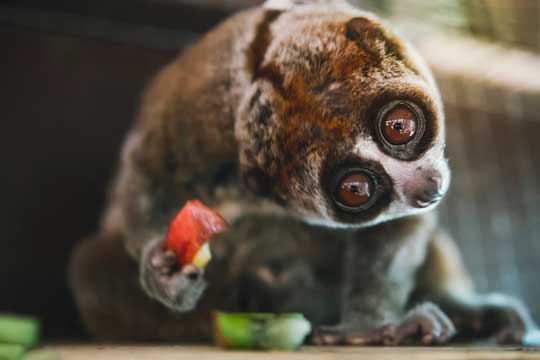


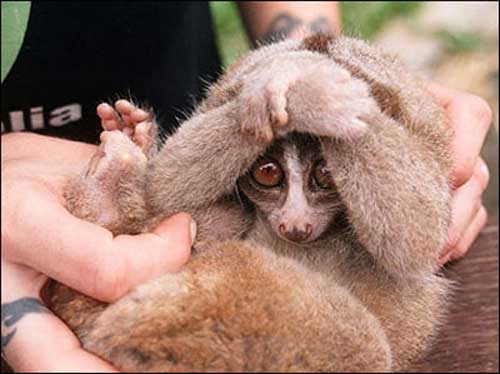

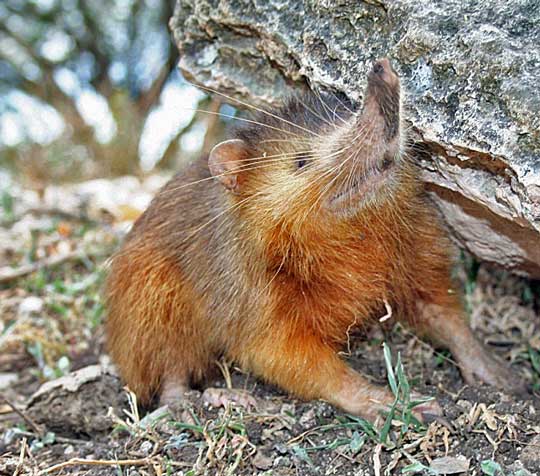

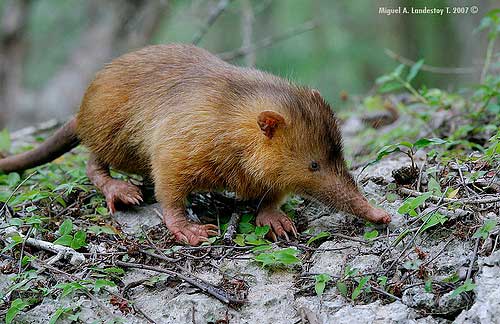
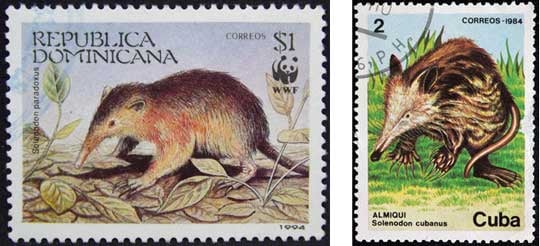


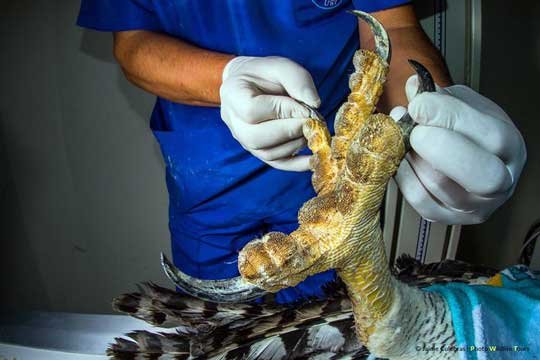

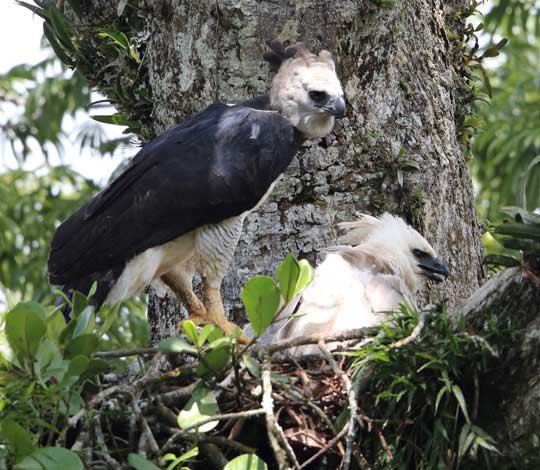

 RSS Feed
RSS Feed